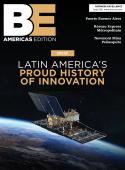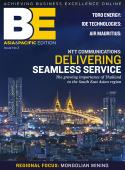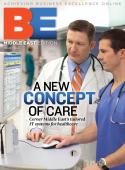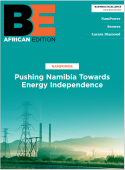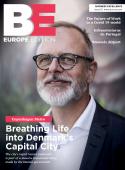Getting results by any measure┬áThe Iredell-Statesville School District earned the Malcolm Baldrige National Quality Award by focusing on process improvements and breaking through resistance to change, Keith Regan learns. Not surprisingly, the Iredell-Statesville School District has been deluged with requests to share its secrets in recent months, especially since the North Carolina district won the Malcolm Baldrige National Quality Award for 2008. The Baldrige program, operated by the National Institute of Standards and Technology, honors excellence in operations in healthcare, manufacturing and education. Since it earned the nod in November 2008, the district has hosted dozens of site visits, sent representatives to speak at national conferences, and even had requests for insights from as far away as Brazil, India and Singapore. The award comes against the backdrop of surging growth in the districtÔÇöfor nearly a decade, it saw enrollment grow by 500 students or more every year and has added a slew of new or expanded school buildings in response over that timeÔÇöand cost-conscious budgeting. ÔÇ£We are among the top ten performing school districts in the state and are in the bottom ten in terms of budget,ÔÇØ says superintendent Terry Holliday. ÔÇ£It gets the attention of politicians and people in general when weÔÇÖre able to make that statement.ÔÇØThe districtÔÇÖs own journey toward process improvement and quality achievement began shortly after Holliday took the helm almost seven years ago. Holliday believed the Baldrige process would be a good framework for organizing change in the district and explored it with some training seminars. ÔÇ£IÔÇÖm a systems thinker, and the process is heavy on systems thinking,ÔÇØ he notes, adding the fact that the Baldrige training comes at no cost. Holliday knew that overcoming resistance to altering how things were done would be his first major hurdle to clear. ÔÇ£Change management is the hardest part of anything, whether itÔÇÖs healthcare, education or running the US government, as the new president is now finding out,ÔÇØ he quips. ÔÇ£You have to build relationships first and build that trust.ÔÇØ Each school in the district was visited and modeled to find out what was working and what wasnÔÇÖt. Then, in cases where improvement was needed, the plan-do-study-act cycle was modeled, with small successes sought at first. For instance, boosting attendance at some schools was tackled, with delinquency rates quickly dropping as the planned improvements were implemented. ÔÇ£People started saying, ÔÇÿThis stuff might workÔÇÖ,ÔÇØ Holliday says.While there has been and remains some resistance, teachers embraced the push because it used measurements that went beyond just the bottom line of test scores. The balanced scorecard the district developed included factors such as absenteeism rates and teacher turnover levels. In fact, of the 17 measures on the scorecard, just two are test-score related. ÔÇ£Teachers liked that it presents a more balanced view of the school system,ÔÇØ Holliday says. ÔÇ£It reflects that thereÔÇÖs more to their job than just getting students to achieve on a standardized test.ÔÇØWhile the award itself is a feather in the districtÔÇÖs cap, it has also been a cost-effective way to receive ÔÇ£hundreds of thousands of dollars worth of feedbackÔÇØ from education and operations experts on how the schools are run. The district was also able to use Baldrige to gain accreditation from the regional schools organization, saving money in the process. ÔÇ£Everyone thought that Baldrige would be expensive, but we spent only $1,500 for the application and site visit fees, and the value of what weÔÇÖve received goes miles and miles beyond that.ÔÇØBeing mindful and deliberate about how money is spent is a hallmark of the district, with money funneled to the programs that make the most difference. ÔÇ£We donÔÇÖt spend money on things that donÔÇÖt work,ÔÇØ says Holliday, who introduced zero-based budgeting early on and has overseen a process in which every line item is carefully scrutinized and prodded for improvement. The district managed to drive $4 million in energy cost-avoidance over a four-year period by standardizing processes and putting systems in place to monitor energy and water usage. Cross-trained teams at each school found ways to save money, with one high school saving $10,000 just by shutting off the lights in hallway soda machines. The district also embraced green building. One of its elementary schools was the first in the country to be Gold certified by the US Green Building Council when it opened in 2003. The district was able to project a seven-year payback on the green improvements in the building, and the design, which featured natural lighting and waterless urinals, among other innovations, has become the prototype for the district. It has been reused three times in the district, though LEED certification is no longer sought on each project, and has been often imitated around the country. Holliday credits both support from the topÔÇöthe school board overseeing the district has its own improvement plan in place and fully supports his effortsÔÇöand from the grass roots. ÔÇ£You have to have champions, and you have to have cross-disciplined teams on the ground level,ÔÇØ he says. Borrowing heavily from Michael HammerÔÇÖs book Reengineering the Corporation, the district has broken down silo walls and cross-trained people wherever possible. ÔÇ£We run very lean in the central office and emphasize that everyone has to work together.ÔÇØSupport at the top is critical to overcoming resistance, he adds. ÔÇ£You need to have that board support because people will take their complaints there; they will pick up the phone and ask questions when they feel the pressure of change. Once people see that itÔÇÖs supported at the very highest levels, they see itÔÇÖs something thatÔÇÖs not just a passing fad. After a while, itÔÇÖs just the way you do business. We do business every day thinking about continuous improvement. Sometimes we donÔÇÖt even speak or think about it in those terms. ItÔÇÖs just the way things are done now.ÔÇØ ÔÇô Editorial research by Tim Conlon┬á




